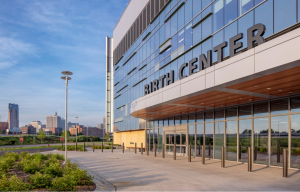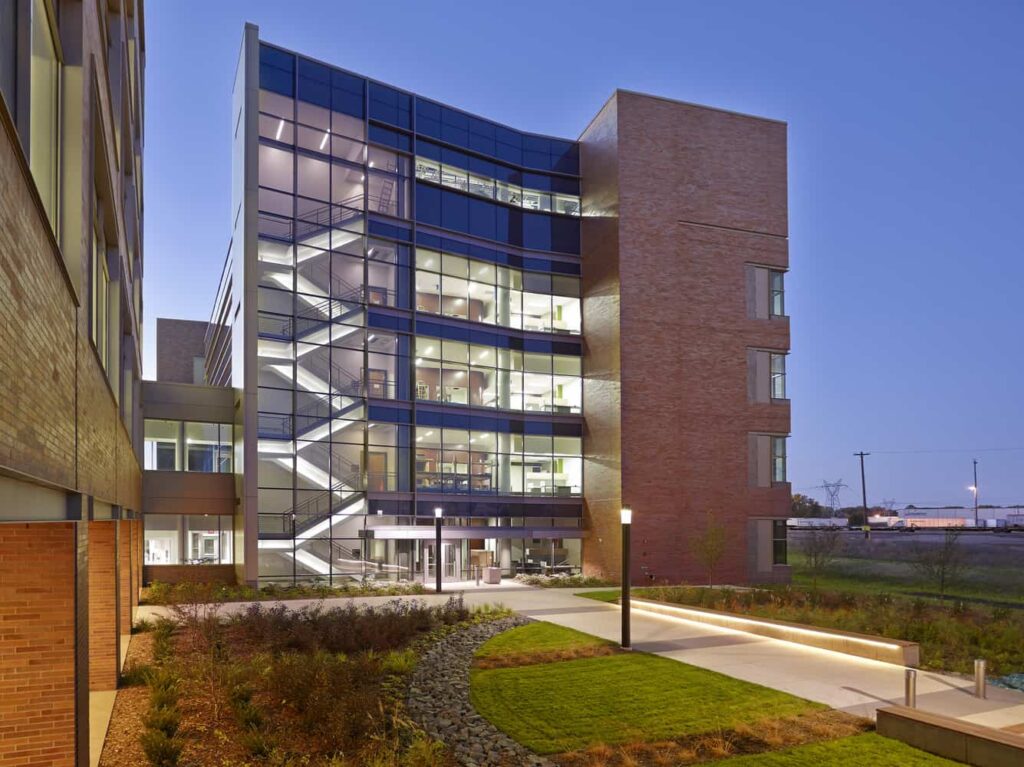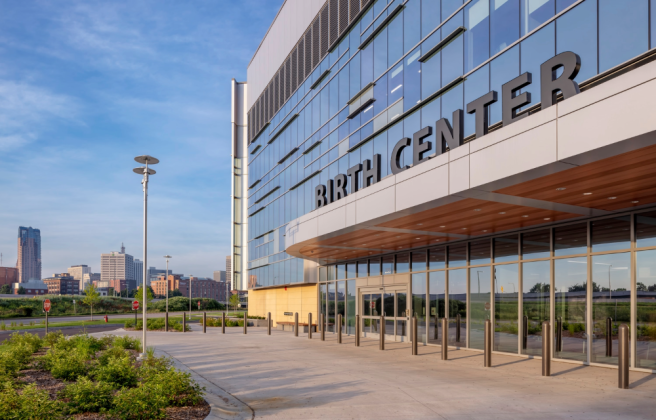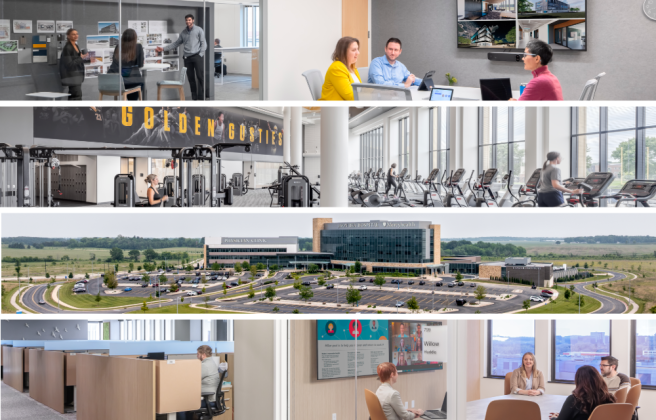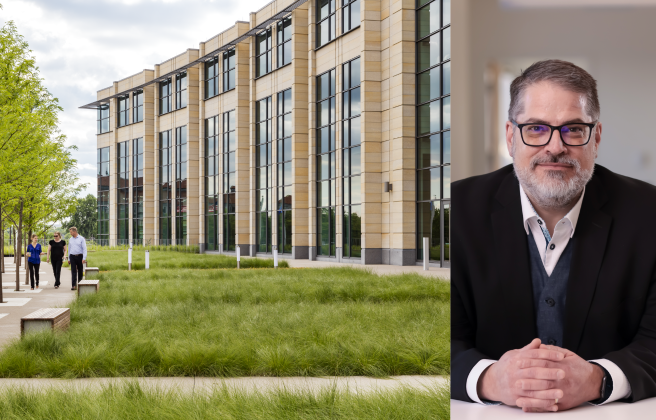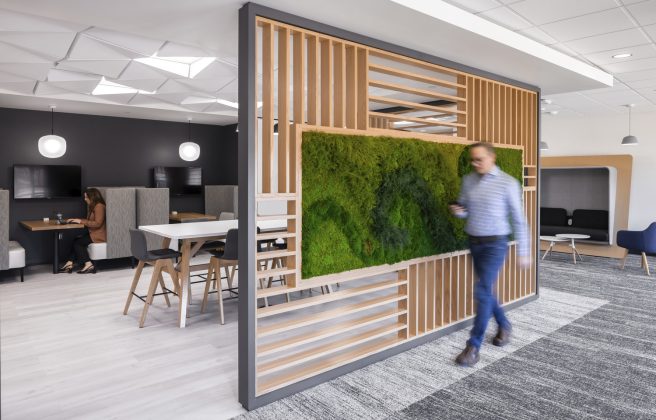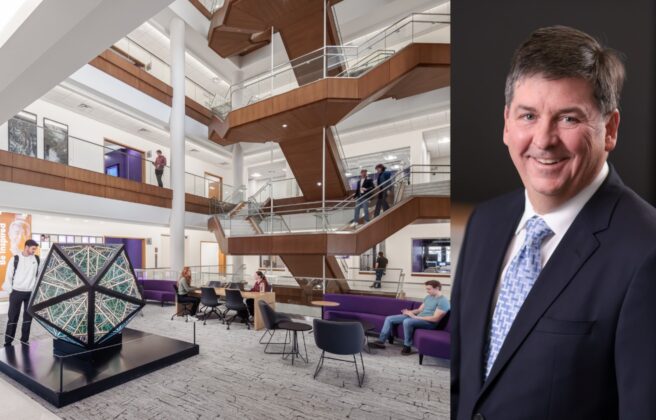The headlines today paint a stark reality confronting our education system: violent and nonviolent crime is putting the safety of students and staff at risk. Whether a single facility campus such as an primary school or a multi-facility postsecondary institution spreading across acres, these threats are forcing administrators, security personnel, and even designers to ask tough questions about creating nurturing, educational environments that also project a sense of safety and security.
Colleges and universities present a unique challenge, both in operations and in perception. While data indicates crime beyond sexual assaults is declining on these campuses, studies also show the public perceives security as inadequate. Operating essentially as autonomous mini-cities that are open to the public, the multi-building campuses, open spaces, pedestrian walkways, and skyway systems present challenges for the best police departments, not to mention the smaller campus law enforcement groups charged with monitoring these campuses.
The challenge for these departments is amplified by the academic mission of colleges and universities, placing a high value on creativity and free expression. Where to find that balance in unmitigated academic exploration and collaboration with a feeling of safety and security can be the greatest tension on campus.
While not underestimating the gravity of the threats that face academic institutions, there is a role that design can play in creating spaces and places that complement safety policies and procedures while upholding the mission of the institution. In the first of a three-part series, we begin by understanding what are threats and risks and their relationships to the built environment.
Threat & Risk Analysis
According to Whole Building Design Guide (WBDG), threats are categorized by the following levels:
- Defined: Specific threats have been received
- Credible: History of a threat in the area or on a similar facility
- Potential: History of a threat in the area, but the facility type has not been a target in the past
- Minimal: No history of a threat in the area
Once the threats and their levels have been identified, the “impact of loss” rating determines whether or not a threat will damage a facility beyond repair, or have minor impacts. Using data from the WBDG, the impact of loss rating scale is as follows:1
- Devastating: The facility is damaged beyond repair
- Severe: The facility is partially damaged, and all or some of the facility will remain closed for a period of time
- Noticeable: The facility is not affected, but a limited number of assets are damaged.
- Minor: The facility has no significant impact on operations
Vulnerability of a facility is another fact that weighs on the threat and risk analysis. If a facility is high profile or contains valuable merchandise (think a museum with high value artifacts or art, or a lab for proprietary research), it may attract threats. If the level of defense against that threat is low, then the vulnerability of the facility is very high. On the other hand, if a facility does not encourage threats and the level of defense is adequate, there is a low vulnerability.
Safety Does Not Happen By Accident
As architects strive to have a clear understanding of a client’s security goals, a threat and risk analysis is an essential component to the design process. A threat is defined as a person or thing likely to cause damage or harm. A risk, on the other hand, is exposure to that damage or harm. When the threat comes from a person, it is said to be a criminal or terrorist type of threat. Other threats can be nature-made, like weather, or accidental, such as fires caused by electrical equipment.
With this understanding of threats and risks as well as vulnerability, designers can begin to shape environments to address the safety goals. Dealing with weather risks, designers can create buildings for resiliency to withstand high winds or recover quickly from flooding. Dealing with threats, designers can create environments that improve visibility through more open and lit spaces while also matching those spaces to the mission and branding of the institution – think a perimeter staircase enclosed in glass and lit in a creative fashion to emulate the activity within the building.
Providing necessary safety and security is a complex challenge. Design, alone, can’t provide the complete solution, but neither can operational procedures. The two combined, though, create an atmosphere of safety and security that welcomes the academic activity that educational institutions were designed to provide.
Life – And Design – Is All About Balance
Colleges and universities likely cannot afford to employ every safety precaution known, so it is important to evaluate the risks and the costs of implementing solutions. The threat and risk assessment helps to determine priorities for enhancing safety and security. The ultimate goal is to balance safety and security while maintaining respect for an open campus learning environment.
Balance is the key to success, especially when it comes to safety in a campus environment. Safety strategies combined with appropriate design solutions that are resilient yet flexible will accommodate the open learning environment that is at the core of a college education.
Part II: Design Strategies
Design strategies for safety and security are explained in detail. From active to passive and emergency response strategies, these strategies present a comprehensive approach that can be preventative or responsive in nature.

